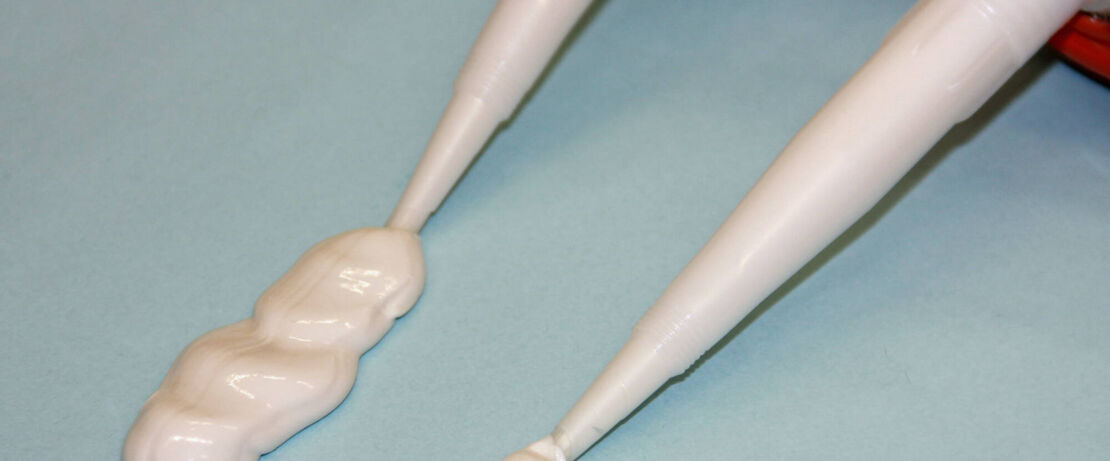
Crosslinking
Permanently stable cohesion with silanes
The task of adhesives and sealants is to provide a secure bond – whether in industrial applications or when used in DIY. If two materials are to be permanently joined together, it is often cheaper and more effective to glue them together than to weld them or used screwed connections. For example, bonding is the most popular choice when joining plastic and aluminum.
Highly efficient polymer crosslinking agent
Silanes are often used to improve several properties of adhesives and sealants, including adhesion, tightness, mechanical properties, and resistance. The various Dynasylan® products have different functions in adhesives and sealants.
A particularly important function is crosslinking, which is triggered by a chemical reaction between the silane molecules and the other components of the formulation - mainly polymer, but also fillers, etc.
This means that silanes from the Dynasylan series® can be used as highly efficient polymer crosslinkers, for example in silicones or in silanes modified polymers (SMP) and polyurethanes. They improve the tensile strength and other mechanical properties of the adhesive or sealant while increasing resistance to moisture, chemicals, UV radiation, high temperatures, and other environmental influences. All this makes the adhesive bond much more durable.
Silane crosslinking is catalyzed by moisture
This is made possible by the special structure of the silanes used, which contain several hydrolyzable alkoxy groups bound to the silicon. Through hydrolysis and condensation, these can form a network between the silanes and existing hydroxyl groups of the polymers or other formulation components (fillers). In addition, the special Dynasylan® products often have two functional groups that can react with organofunctional groups, e.g., polymers.
As a result, the silanes can also incorporate the polymers into the network via this organofunctional group and enable the combination of organic and inorganic components of the formulations via this bifunctionality.
Silane crosslinking via the alkoxy groups is catalyzed by moisture: First, the silane molecules are hydrolyzed by water, leading to the formation of silanol groups. These then condense, causing the silanol groups to condense with silanol groups of other silanes or hydroxyl groups of polymers, etc. In this way, they crosslink and water is formed as a by-product.
Crosslinking speed can be changed
The speed of crosslinking can be affected by various factors, such as the type and quantity of the silane added or a change in the catalyst or pH value. This allows the crosslinking reaction to be adapted in line with the respective product requirements.
Different types of crosslinking take place depending on the chemical structure of the Dynasylan® product. Important crosslinking agents from Evonik include Dynasylan® P, Dynasylan® 40, Dynasylan® A, Dynasylan® VTMO, VPS 7163, VPS SIVO 4721, VPS SIVO 260, Dynasylan® 1122, Dynasylan® BTSE as well as a variety of other amino silanes as a crosslinking agent or co-crosslinking agents.
The benefits at a glance:
- Resistant to chemicals
- Enhanced mechanical properties
- Thermal stability
- Resistant to weather influences
